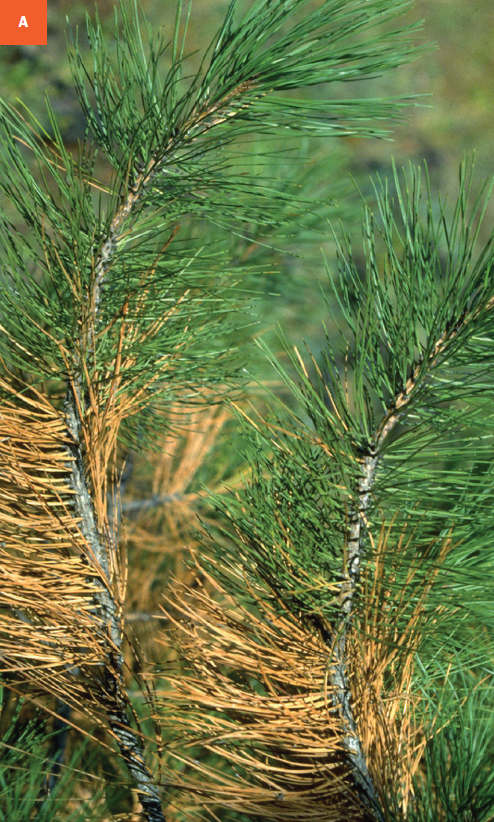Seasonal Needle Drop
DAMAGE/SYMPTOMS Seasonal needle drop is the gradual yellowing or browning and eventual loss of older interior needles. Needles that drop due to age may have some spots and blemishes; however, they do not display typical symptoms of disease or insect damage.
OCCURRENCE Seasonal needle drop occurs in late summer to early fall. This casting of needles is triggered by weather and the time of year, and many evergreens are likely to show symptoms at the same time.
SUSCEPTIBILITY/TOLERANCE The amount of needle loss is dependent upon species, temporal factors, and environmental conditions. White pines are seriously affected. Third- and even second-year needles yellow and fall throughout the entire tree. Austrian and Scotch pines typically lose only fourth-year needles. Cedars often display browning of leaves and flagging of older branchlets. Eventually entire branchlets are shed. Spruce and fir generally maintain many years of growth. Seasonal needle drop is typically not obvious but can be visible on inner branches. Larch and tamarack trees lose all of their needles every fall.
MANAGEMENT Management for seasonal needle drop is not necessary. If the yellowing and needle drop is restricted to older needles and is not extreme, it is likely not a problem. Maintain tree health. Irrigating evergreens thoroughly before the ground freezes will help to minimize the possibility of winter injury through desiccation.
A Browning of older needles in a pine.

